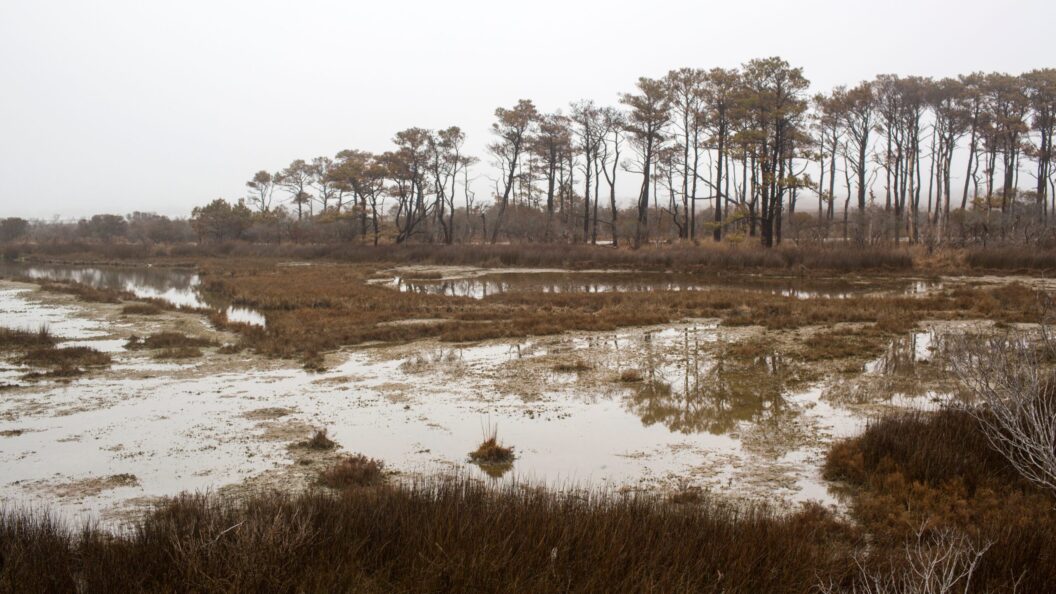Ghost Forests: A Haunting Sign of Coastal Change
Introduction
Along the shores of the Chesapeake Bay and other coastal areas of the United States, a striking phenomenon is taking shape: ghost forests. These eerie remnants of once-thriving cedar and pine stands, stripped bare of their bark and left to decay, are stark indicators of significant ecological shifts driven by rising sea levels and increasing salinity in coastal soils.
The Emergence of Ghost Forests
Since the late 19th century, ghost forests have increasingly proliferated in regions where land gently slopes into the ocean, marking an alarming trend of tree mortality due to rising salinity. The phenomenon has resulted in hundreds of thousands of acres of trees succumbing to the hostile conditions created by encroaching saltwater, leaving behind skeletal remains resembling giant bones embedded in the earth.
These barren landscapes typically sit in proximity to marshes, which may serve as the next stage in the ecological transition. As coastal researchers delve into why this phenomenon is occurring, they emphasize that ghost forests reflect a growing and critical issue for both the environment and coastal communities.
Causes of Tree Mortality
Coastal ecologist Keryn Gedan from George Washington University points to sea level rise as a primary driver of the ghost forest phenomenon. Intensified storm surges can inundate land with saltwater, and rising sea levels shift the groundwater table, allowing saltwater to penetrate further inland. Consequently, trees that previously thrived in freshwater environments find themselves stressed and unable to survive due to increased salinity.
Gedan, along with coauthors of a recent article in the Annual Review of Marine Science, highlights that the impact of rising sea levels on coastal ecosystems is not merely a modern development but a recurring theme throughout history. The transition from forest to marsh has been documented during earlier periods of climatic shifts, revealing a dynamic interplay between marine and terrestrial ecosystems over time.
Transitioning Ecosystems
Despite the stark change represented by ghost forests, Gedan reassures that the transition from forest to marsh is not inherently disastrous. Marshes, while different in ecological composition, provide essential ecosystem services such as storm buffering and carbon storage. Researchers are exploring how the evolution of these dead forests into marshland might affect coastal ecosystems overall.
Marcelo Ardón, an ecosystem ecologist at North Carolina State University, suggests that the relationship between forests and marshes is symbiotic. “You would think of these forests and marshes kind of dancing together up and down the coast,” he notes. This perspective indicates that while the loss of forests should not be overlooked, the emerging marshlands may play an equally vital role in maintaining ecological balance.
Importance of Marsh Ecosystems
Marshlands serve as crucial habitats for numerous species, including birds like salt marsh sparrows and marsh wrens, as well as crustaceans and various native salt-tolerant plants. These ecosystems function as nurseries that provide both food and shelter, contributing to the rich biodiversity of coastal areas. The transition from ghost forests to marshes could potentially preserve, or even enhance, these vital services despite the complex nature of this ecological shift.
Conclusion
The emergence of ghost forests along the United States’ coastlines illustrates the profound impacts of climate change on ecosystems. While the loss of trees signals distress in coastal habitats, the potential transformation into marshlands highlights nature’s resilience and capacity for adaptation. As researchers continue to investigate these changes, understanding their implications will be crucial for planning and preserving ecological integrity in the face of evolving environmental conditions.
This evolving landscape serves as a critical reminder of our interconnectedness with nature, urging both public awareness and proactive measures to mitigate the effects of climate change on coastal ecosystems. By recognizing the signs and implications of ghost forests, communities can better prepare for the future and embrace sustainable practices that support ecological health.









